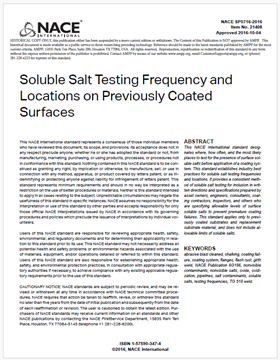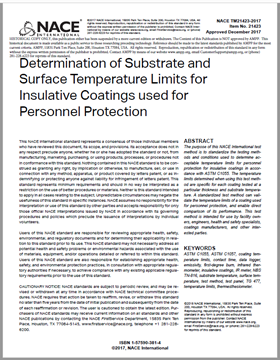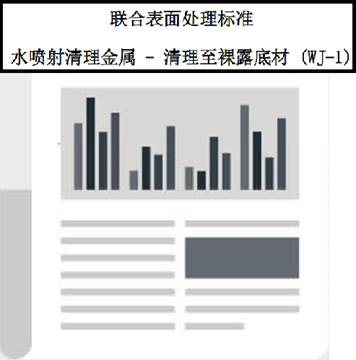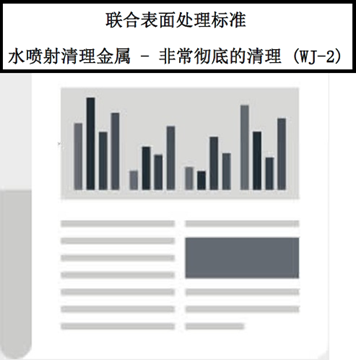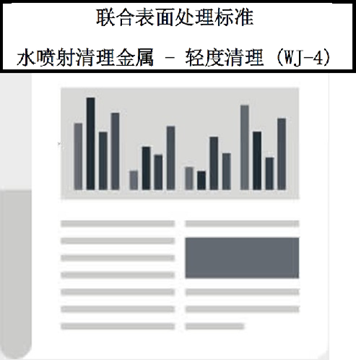Search
Products tagged with 'Standard Practices'
View as
Sort by
Display
per page
NACE SP0716-2016, Soluble Salt Testing Frequency and Locations on Previously Coated Surfaces
Product Number:
21409-SG
Publication Date:
2016
$179.00
NACE SP21412-2016/SSPC-CPC 1, Corrosion Prevention and Control Planning
Product Number:
21412-SG
ISBN:
1-57590-356-3
Publication Date:
2016
$179.00
NACE TM0215-2015 “Test Method for Measurement of Gouge Resistance of Coating Systems”
Product Number:
21270-SG
Publication Date:
2015
$179.00
NACE TM21423-2017 “Determination of Substrate and Surface Temperature Limits for Insulative Coatings used for Personnel Protection”
Product Number:
21423-SG
Publication Date:
2017
$179.00
NACE WJ-1/SSPC-SP WJ-1-2012 (Editorial Corrections 1/5/2017), Waterjet Cleaning of Metals—Clean to Bare Substrate (WJ-1)
Product Number:
21158-SG
$179.00
NACE WJ-1/SSPC-SP WJ-1-2012-SG (Chinese), “Waterjet Cleaning of Metals—Clean to Bare Substrate (WJ-1)” Chinese Translation
Product Number:
21191-SG
ISBN:
1-57590-248-6
$179.00
NACE WJ-2/SSPC-SP WJ-2-2012 (Editorial Corrections 1/5/2017), Waterjet Cleaning of Metals—Very Thorough Cleaning (WJ-2)
Product Number:
21155-SG
$179.00
NACE WJ-2/SSPC-SP WJ-2-2012-SG (Chinese), “Waterjet Cleaning of Metals—Very Thorough Cleaning (WJ-2)" Chinese Translation
Product Number:
21192-SG
ISBN:
1-57590-249-4
$179.00
NACE WJ-3/SSPC-SP WJ-3-2012 (Editorial Corrections 1/5/2017), Waterjet Cleaning of Metals—Thorough Cleaning (WJ-3)
Product Number:
21156-SG
$179.00
NACE WJ-3/SSPC-SP WJ-3-2012-SG (Chinese), “Waterjet Cleaning of Metals—Thorough Cleaning (WJ-3)” Chinese Translation
Product Number:
21193-SG
ISBN:
1-57590-250-8
$179.00
NACE WJ-4/SSPC-SP WJ-4-2012-SG (Chinese), “Waterjet Cleaning of Metals—Light Cleaning (WJ-4)” Chinese Translation
Product Number:
21194-SG
ISBN:
1-57590-251-6
$179.00
NACE WJ-4/SSPC-WJ-4-2012 (Editorial Corrections 1/5/2017), Waterjet Cleaning of Metals—Light Cleaning (WJ-4)
Product Number:
21157-SG
ISBN:
1-57590-251-6
$179.00

